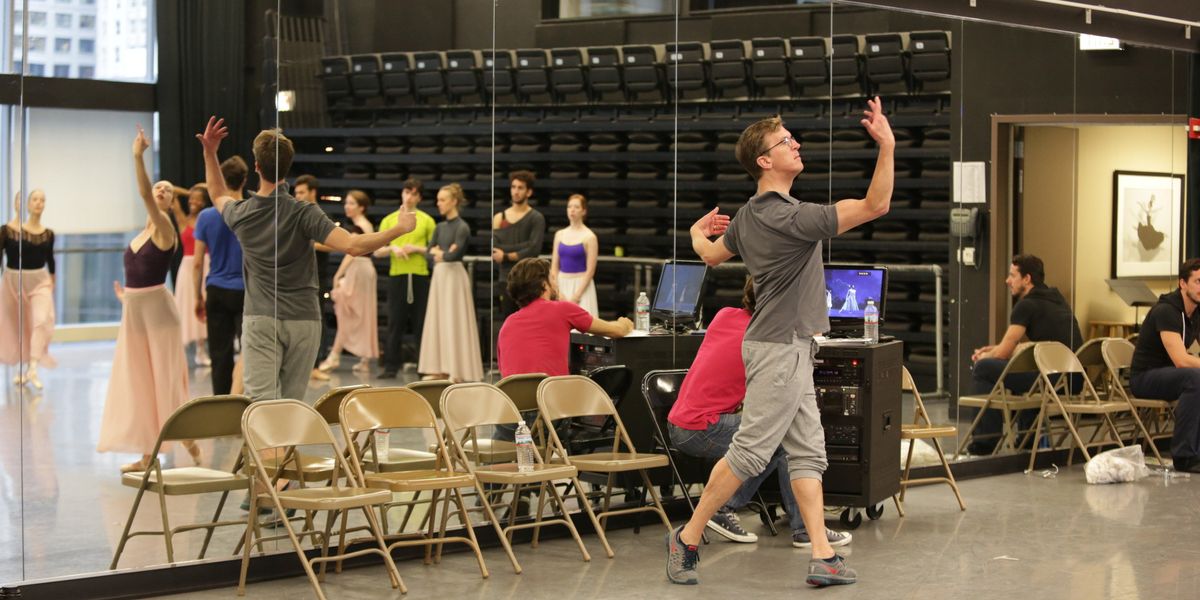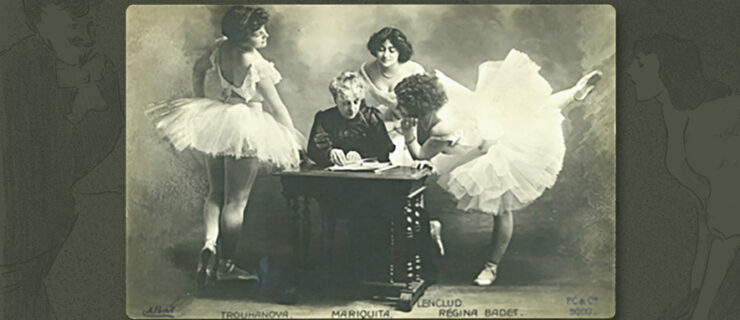Joffrey Ballet's Second Wind: How Ashley Wheater Reinvigorated the Celebrated Company
The first time Ashley Wheater was courted to be artistic director of the Joffrey Ballet, he said “Thanks, but no thanks”—he was very happy at San Francisco Ballet, where he’d spent eight years as a principal dancer and 10 more on the artistic staff. But a trip to the Windy City for the Chicago Dancing Festival and a visit to Joffrey’s studios prompted feelings of nostalgia for Wheater’s early years dancing with the company.
He was hired by co-founders Robert Joffrey and Gerald Arpino in 1985, when the company was still based in New York City and under Joffrey’s direction. After Joffrey’s death, Arpino became artistic director and later moved a struggling Joffrey Ballet to its current home in Chicago in 1995.
When Arpino fell ill and began to look for a successor, the company had lost much of its original adventurous spirit. Remembering its earlier spark, Wheater agreed to apply during that trip to Chicago, and accepted on the spot in 2007 after a weeklong interview process.
As the third artistic director in the company’s 62-year history, Wheater has spent the last 10 years rebuilding its national reputation, tackling challenging new repertoire and reimagined classics at a ferocious pace. The rep now includes works by choreographers like Christopher Wheeldon, John Neumeier, Alexander Ekman and Yuri Possokhov. Wheater shelved many of Joffrey’s and Arpino’s dances to make room for new ones, preferring to honor Robert Joffrey’s legacy by taking risks and fostering innovation.
 Wheater. Photo by Todd Rosenberg, Courtesy Joffrey Ballet.
Wheater. Photo by Todd Rosenberg, Courtesy Joffrey Ballet.
Wheater credits much of the company’s recent success on Chicagoans’ appetite for the arts, saying, “The Joffrey would not be here without Chicago, but it’s also become very much part of the cultural fabric of this city.” Ambitious collaborations include last fall’s co-presentation of Neumeier’s Orphée et Eurydice, with the Lyric Opera of Chicago, and two works by Possokhov: 2016’s The Miraculous Mandarin with the Cleveland Symphony Orchestra and an upcoming Anna Karenina with The Australian Ballet.
Rockford, Illinois, native April Daly has been there for all of it. She joined the company under Arpino in 2003 and is among just eight remaining dancers he hired. “Our repertoire has expanded. To dance what’s expected of us, you need more versatility,” she says. “Those of us who are still here adapted to the change. I think the dance world has evolved, and Ashley is bringing in dancers who can do it all.”
Daly lauds Wheater’s communication skills, and he admits that he is a hands-on director, wanting to be in the studio as much as possible to teach, coach and rehearse with his dancers. Along with executive director Greg Cameron, he has worked to develop mutual respect in and out of the studio. For example, when he became artistic director, Wheater said the dancers would occasionally try to hide injuries to avoid being taken out of a role. But adopting an open-door policy has improved the level of trust between the artists and the company’s leadership.
 April Daly and Fabrice Calmels. Photo by Todd Rosenberg, Courtesy Joffrey Ballet.
April Daly and Fabrice Calmels. Photo by Todd Rosenberg, Courtesy Joffrey Ballet.
Daly says there are pros and cons to dancing for a non-ranked company like Joffrey, which has never had the traditional designations of corps de ballet, soloists and principals. “If you’re a principal dancer,” she reflects, “you’re automatically ruled out to do a cool soloist’s role, so this keeps things really open.” Indeed, a dancer might play Marie in The Nutcracker one night and a snowflake the next. For her, Wheater’s upfront communication is an important aspect to working in this structure. “You’re not just flying blind because there’s no rank,” she says. “You know where you stand with him.”
Though Daly rose through Joffrey’s unofficial ranks to dance some of ballet’s most coveted roles, like Odette/Odile and Kitri, she says she doesn’t “have the luxury of getting comfortable. We all sign a yearly contract, so nobody is really secure. You have to constantly be proving yourself and stay on top of your game.”
And a tough game it is. While the Joffrey Ballet demands the highest degree of technical excellence and stylistic versatility, Wheater takes a holistic approach when selecting dancers. “I want to develop and nurture artists,” he says, seeking “people who are not afraid to be expressive, and understand all the layers that go into making a work above and beyond the steps.”
Audition Advice
Prospective Joffrey dancers audition in company class by invitation only. “When dancers are in the studio with your company, they learn about you and you learn about them,” says Wheater. “You can see their energy, ability and musicality within that group. I’m not going out to buy principal dancers—we’re a non-ranked company. There’s an understanding that you’re gonna get a lot to do in the Joffrey, and that’s what people want. They want to dance.”
Joffrey Ballet At A Glance
Number of dancers: 43
Length of contract: 38 weeks, with annual renewal meetings
Starting salary: Per contract negotiations with the American Guild of Musical Artists
Performances per year: 80 for the 2017–18 season
Website: joffrey.org





